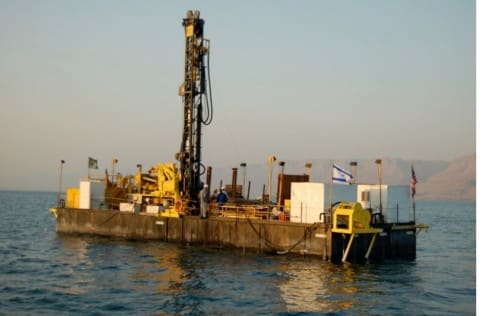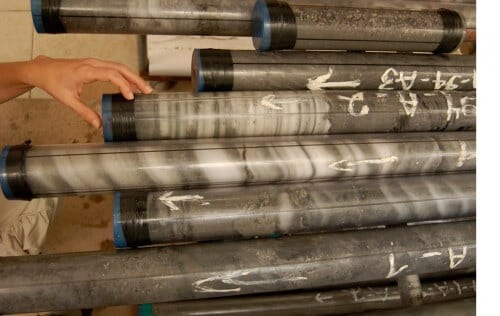This is according to the findings of scientific drilling in the Dead Sea conducted under the auspices of the National Academy of Sciences and under the leadership of Tel Aviv University, the Geological Institute and the Hebrew University, and under the direction of Dr. Michael Lazar from the University of Haifa

If you thought that the current year, which appears to be a year of drought, is worrisome, pay attention to the following fact: in the past there were drought periods of hundreds of years in a row in the Land of Israel, explains Dr. Michael Lazar from the Leon Charney School of Marine Sciences at the University of Haifa, who directed the The scientific drilling in the Dead Sea a few months ago.
The decrease in rainfall this winter brought the possible consequences of the fear of drought to the agenda. However, if we have gotten used to it in recent years that after one, two or even three years of parking there will always be a more rainy period, findings of international scientific drilling, conducted in the Dead Sea, under the auspices of the National Academy of Sciences and under the leadership of Tel Aviv University, the Geological Institute and the Hebrew University, under the direction of Dr. R. Lazar from the University of Haifa, show that this was not always the case in our region.
The findings came from scientific drilling at a depth of 460 m below the surface of the Dead Sea, which allowed us to examine the climate conditions that prevailed in our region in the last 250,000 years. The picture that emerges from the analysis of the soil layers is that the salt sea dried up once or twice, and this was due to a drought that lasted hundreds of years each time.

According to Dr. Lazar, the unique structure of the bottom of the Dead Sea, and the fact that its sources come from both the northern streams and the Arnon stream on the one hand, and the lake has no water outlet on the other, make it a "recording device" of the climate in our region over thousands and hundreds of thousands of years. Among the layers that "recorded" the change of the normal seasons, the researchers also found layers of salt that indicate its drying. In addition to the layers of salt found in the core extracted from the bottom, the researchers also identified pebbles - small stones that indicate a coastal environment in the center of the Dead Sea. According to Dr. Lazar, the unique shape of the pebbles found in the center of the sea further strengthened the argument that they arrived there due to dehydration, and not due to a flood.
"Today, with the intervention of man, the Dead Sea basin is drying up at a rate of one meter per year. The level today stands at 300 meters, which means it will take another 300 years to dry out at this rate. Since human intervention was not relevant to the droughts that occurred in the past, we conclude that they occurred due to climatic conditions of drought that lasted for centuries. In the past, the Dead Sea managed to restore itself, but then man's hand was not involved," concluded Dr. Lazar.
More of the topic in Hayadan:
- Previous report on the study in the Dead Sea from 2012
- The weather in the USA is going crazy: the east is freezing, the west is suffering from a drought

7 תגובות
Dan
What is your education on the subject?
Dr. Lazar does not understand anything about the desiccation of brines. The rate of evaporation will decrease and therefore the Dead Sea will never dry up.
250,000 years ago the Dead Sea and the Kinneret were one big and long lake.
How long ago did this last drought occur?
After re-reading I realized the mistake,
instead of "the level today is 300 meters",
The water depth should be 300 meters,
Worth fixing.
It says: "The level today is 300 meters"...
According to what is known and most of the data the current level of the water surface
In the northern basin of the Dead Sea it is about 400 meters...
Where did 100 meters go (lost?)
Now all kinds of geniuses will take this article as conclusive proof that there is no global warming....